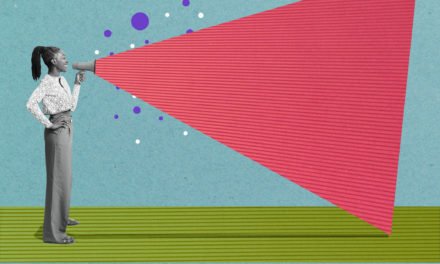
Code-switching has been a topic that has resurfaced in mainstream DEI conversations in recent years. So, what is code-switching? No, it is not a new computer program. It has nothing to do with IT.
Linguist Hans Vogt originally introduced the term code-switching in 1954 to refer to the seamless switching between languages. Fast forward to the 2000s, where the scope of code-switching has broadened to include more than speech and is centered more around marginalized groups.
Have you ever been the only person with a marginalized identity in a group and felt like you did not fit the culture? Have you ever felt that you needed to dress a certain way to feel included? Racial code-switching doesn’t just apply to changing speech patterns, but also to clothing, hair, tone of voice, and behavior or interests.
I have heard people from dominant identity groups share comments like, “I have to code-switch, too. I use curse words at home but have to code-switch to refrain from speaking like that in the workplace.” Although this may be true, I am here to talk specifically about marginalized groups having to adapt to preferences of dominant groups in the workforce. Racial code-switching is far more complicated and far more detrimental to the health of the marginalized person doing the switch. Let me explain.
Why Do People Code-Switch?
- Get in where you fit in: “Where did you go for spring break?” “Did you like the hockey game?” This can be a normal conversation for colleagues in the workplace but imagine if you can’t travel or do not have an interest in the sport. Code-switching can cause marginalized groups to feel uncomfortable and afraid that they may be ostracized by the majority. The fear of not getting promoted, given stretch projects, or a raise can cause people to “act like” their counterparts.
- Social norms of the culture: What is considered professional in the workplace, and who determines it? If someone comes into the workplace with red, blue, and green hair, how is this perceived as compared to a person who wears locks, an afro, or a dashiki with neatly combed braids? Are people from some groups more readily perceived as “unprofessional” and disciplined or fired?
- Avoiding negative stereotypes: Stereotypes are defined as a fixed, over-generalized belief about a particular group or class of people. When someone from a marginalized group acts in a manner that supports a negative stereotype, the majority group may reconfirm their beliefs in that stereotype. People may “switch” as a result of feeling they have to “represent” their entire racial, social, or religious group.
Ways Marginalized People Code-Switch
- Dress: For example, wearing glasses in the workplace to appear smarter or wearing a dress instead of slacks to appear more professional when at a conference.
- Hairstyles: Perhaps wearing hair in a natural style but deciding to pull it back instead of keeping an afro around white colleagues.
- Communication/tone: Employees from dominant groups may feel freedom to speak with a more relaxed communication style while a marginalized person may feel like they have to pronounce every word of the King’s English.
- Presence: Always having to walk on eggshells to appear, at all times, professional and competent. Marginalized individuals may feel they do not have the luxury to make a mistake.
Problems with Code-Switching
The majority group (whether across dimensions of gender, race, religion, sexual orientation, etc.) sets the standard at the workplace. When a workplace is made up predominantly of people of the same cultural background, marginalized individuals are made to conform to the workplace’s norms. If the majority are wearing suits, no jewelry, and are introverted, when a person comes to the organization with large, colorful jewelry and has a strong outgoing personality, they may be told to “calm down” or change their appearance based on these arbitrary preferences.
This has critical consequences across race. According to the CROWN Research Study:
- Black women are 80% more likely to change their natural hair to meet societal norms in the workplace.
- Black women are 1.5 times more likely to be sent home or know of a Black woman sent home from the workplace because of her hair.
- 1 in 2 Black children have experienced hair discrimination as early as five years old — and the impact can last a lifetime.
Stress plays a major role in code-switching. Accommodating the norms can become very stressful for the person trying to fit into what the standards of professionalism mean to the masses, and can negatively impact mental and physical health.
Manifestations of code-switching represent a continuous “burden of proof”— a person having to prove their worth through their dialogue, dress, hairstyle, choice of activities, mannerisms, and tone of voice. Not appearing too threatening, too vocal, too loud, or just too (fill in the blank).
Does Code-Switching Work?
Many assert that, if done effectively, code-switching can work. As we know, it can take a toll on the person doing the switching. It is a daily task with a daily struggle of not being found out. People are told to bring their authentic selves to work, but how can this be accomplished? Depending on the person, code-switching can have its advantages and disadvantages.
Choosing to switch is a personal preference and to what extent a person chooses is something that has to be kept up on a daily basis. It can be somewhat of a balancing act to live in both worlds. What are you willing to sacrifice? Are you losing your authentic self by code-switching? Is it worth it? If it is taxing on the person and it is self-defeating, then the answer may be no. If it helps to achieve a goal, then maybe the answer is yes. The decision is up to the individual.
Hopefully, one day everyone can feel safe to bring their authentic self to the workplace without worrying about fitting into the group’s cultural norms. Until that day, we wrestle with joining in the masses to get along and wearing our own personal masks.
Let’s all strive to recognize and value personal and cultural differences, model curiosity, and question the origins and values of norms that inform our perceptions to foster safer and more inclusive spaces for our colleagues and peers.



















Excellent article! You hit the nail on the head!